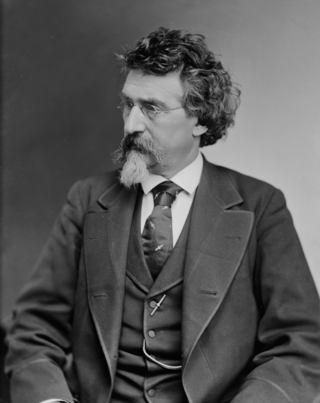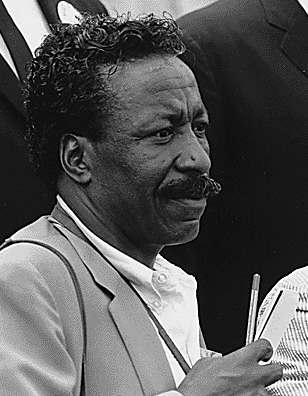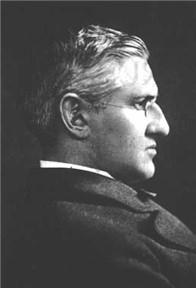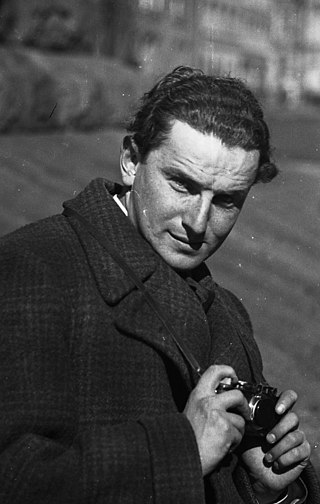
Ansel Easton Adams was an American landscape photographer and environmentalist known for his black-and-white images of the American West. He helped found Group f/64, an association of photographers advocating "pure" photography which favored sharp focus and the use of the full tonal range of a photograph. He and Fred Archer developed a system of image-making called the Zone System, a method of achieving a desired final print through a technical understanding of how the tonal range of an image is the result of choices made in exposure, negative development, and printing.

Mathew B. Brady was an American photographer. Known as one of the earliest and most famous photographers in American history, he is best known for his scenes of the Civil War. He studied under inventor Samuel Morse, who pioneered the daguerreotype technique in America. Brady opened his own studio in New York City in 1844, and went on to photograph U.S. presidents John Quincy Adams, Abraham Lincoln, and Martin Van Buren, among other public figures.

The American Civil War was the most widely covered conflict of the 19th century. The images would provide posterity with a comprehensive visual record of the war and its leading figures, and make a powerful impression on the populace. Something not generally known by the public is the fact that roughly 70% of the war's documentary photography was captured by the twin lenses of a stereo camera. The American Civil War was the first war in history whose intimate reality would be brought home to the public, not only in newspaper depictions, album cards and cartes-de-visite, but in a popular new 3D format called a "stereograph," "stereocard" or "stereoview." Millions of these cards were produced and purchased by a public eager to experience the nature of warfare in a whole new way.

Gordon Roger Alexander Buchanan Parks was an American photographer, composer, author, poet, and film director, who became prominent in U.S. documentary photojournalism in the 1940s through 1970s—particularly in issues of civil rights, poverty and African Americans—and in glamour photography. He is best remembered for his iconic photos of poor Americans during the 1940s, for his photographic essays for Life magazine, and as the director of the films Shaft, Shaft's Big Score and the semiautobiographical The Learning Tree.

The American Colony of Jerusalem was established in the Ottoman Empire in 1881 as a "Christian utopian society" led by American religious leader Horatio Gates Spafford and his Norwegian wife Anne Tobine Larsen Øglende.

William Henry Jackson was an American photographer, Civil War veteran, painter, and an explorer famous for his images of the American West. He was a great-great nephew of Samuel Wilson, the progenitor of America's national symbol Uncle Sam. He was the great-grandfather of cartoonist Bill Griffith, creator of Zippy the Pinhead comics.

Francis Frith was an English photographer and businessman. Francis Frith & Co., the company he founded in 1860 with the initial goal of photographing every town and village in England, quickly became the largest photographic publishers in the world and eventually amassed a collection of 330,000 negatives covering over 7,000 population centres across Great Britain and Ireland.

Antoinette Frissell Bacon, known as Toni Frissell, was an American photographer, known for her fashion photography, World War II photographs, and portraits of famous Americans, Europeans, children, and women from all walks of life.

Horatio Gates Spafford was an American lawyer and Presbyterian church elder. He is best known for penning the Christian hymn It Is Well With My Soul following the Great Chicago Fire and the death of his four daughters on a transatlantic voyage aboard the S.S. Ville du Havre.
George Everard Kidder Smith was an American architect, author, educator, photographer and prolific "builder" of books and curator of exhibitions.

Carol McKinney Highsmith is an American photographer, author, and publisher who has photographed in all the states of the United States as well as the District of Columbia and Puerto Rico. She photographs the entire American vista in all fifty U.S. states as a record of the early 21st century.

Österlandet (ISBN 978-0-9794059-0-7) is a photography book released in 2007. It chronicles 100 years of change in Egypt and Jerusalem by retracing the travels of Algot Sätterström, a Swedish inventor and painter.

Edward Fitzmaurice Chambré Hardman was an Anglo-Irish photographer, later based for most of his career in Liverpool. He was a landscape photographer by vocation, although his business was largely dependent on portraiture.

Ze'ev (Wilhelm) Aleksandrowicz was an Israeli photographer. He is mostly known for his work in Palestine and Japan, during the first half of the 1930s.

The participation of women in photography goes back to the very origins of the process. Several of the earliest women photographers, most of whom were from Britain or France, were married to male pioneers or had close relationships with their families. It was above all in northern Europe that women first entered the business of photography, opening studios in Denmark, France, Germany, and Sweden from the 1840s, while it was in Britain that women from well-to-do families developed photography as an art in the late 1850s. Not until the 1890s, did the first studios run by women open in New York City.
Najib Anton Albina was the master photographer of the Palestine Archaeological Museum and, in that position, took the first original sets of photographs of the Dead Sea Scrolls. Through his positions with the American Colony and Palestine Archaeological Museum, he used photography as a means of recording the history of Christian Palestinian culture as well as the discovery of past cultures in the region. He had a significant impact on the techniques of archeological photographers, especially those who took pictures of the Dead Sea Scrolls, through his contributions to the use of infrared photography.

Lewis Larsson, was born Hol Lars Larsson in Nås, Sweden, and served as the de facto head of the Photographic Department of the American Colony in Jerusalem, British Mandate Palestine. Larsson was renowned for his use of photojournalism to record and document the cultures of the south Mediterranean, primarily within the Palestinian region. Larsson was also a well respected diplomat of Sweden who acted as the vice consul and consul to Jerusalem and in that role acted in the best interests of the American Colony.
Anthony Frank Kersting was a British architectural photographer. His images of British, European, and Middle Eastern architecture also feature urban and village life, landscape, commerce, transport and leisure. He was considered to be the leading architectural photographer of his generation.

Zoltan (Zvi) Kluger was an Israeli photographer. He is known as one of the most important photographers in Mandatory Palestine.

Photography in Sudan refers to both historical as well as to contemporary photographs taken in the cultural history of today's Republic of the Sudan. This includes the former territory of present-day South Sudan, as well as what was once Anglo-Egyptian Sudan, and some of the oldest photographs from the 1860s, taken during the Turkish-Egyptian rule (Turkiyya). As in other countries, the growing importance of photography for mass media like newspapers, as well as for amateur photographers has led to a wider photographic documentation and use of photographs in Sudan during the 20th century and beyond. In the 21st century, photography in Sudan has undergone important changes, mainly due to digital photography and distribution through social media and the Internet.

















